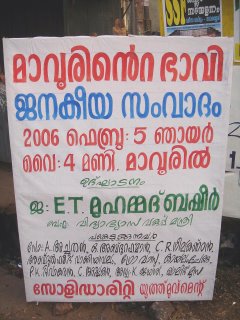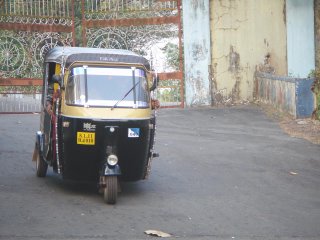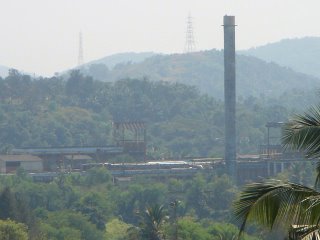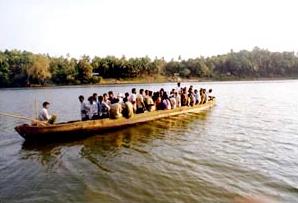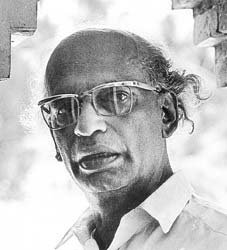 For many years now I bought "Samakalika Malayalam Varikha" just to read one particular column. Those will be three (and sometimes four) innocuous looking pages somewhere in the middle, "Sahityavaraphalam" by M Krishnan Nair. And for last many months, since he was very unwell, most of the issues won't have the column. And the men who run the magazine very well know that there are a lot of people like me who are buying their weekly just for this particular piece. So after frantically searching through the entire length of the varikha and not finding the column, you return back to the first page, only to see in some corner, in the smallest fonts available, it will be mentioned as, "due to ill-health Krishnan Nair sir hasn't been able to write Sahityavaraphalam, we hope that our esteemed readers won't mind". And from now I can't even hope to see that, for the beloved Krishnan Nair Sir will never write the varaphalam again.
For many years now I bought "Samakalika Malayalam Varikha" just to read one particular column. Those will be three (and sometimes four) innocuous looking pages somewhere in the middle, "Sahityavaraphalam" by M Krishnan Nair. And for last many months, since he was very unwell, most of the issues won't have the column. And the men who run the magazine very well know that there are a lot of people like me who are buying their weekly just for this particular piece. So after frantically searching through the entire length of the varikha and not finding the column, you return back to the first page, only to see in some corner, in the smallest fonts available, it will be mentioned as, "due to ill-health Krishnan Nair sir hasn't been able to write Sahityavaraphalam, we hope that our esteemed readers won't mind". And from now I can't even hope to see that, for the beloved Krishnan Nair Sir will never write the varaphalam again.Column writers are very rare in Malayalam. I can't even think of anyone!. Other than the very popular
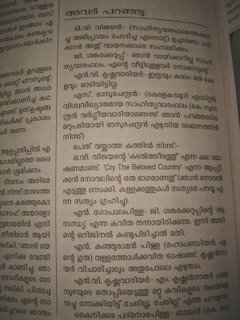 political columns that EMS and Nayanar used to write in Deshabhimani, are there any?. Even in the Indian English Literary world, the only one that comes to my mind (and I follow eagerly), although it is more of current affairs, is the Sashi Taroor column in The Hindu. So under such a backdrop, how to describe 36 years of relentless, passionate "weekly literature forecasting"... amazing, unparalleled in world literature.
political columns that EMS and Nayanar used to write in Deshabhimani, are there any?. Even in the Indian English Literary world, the only one that comes to my mind (and I follow eagerly), although it is more of current affairs, is the Sashi Taroor column in The Hindu. So under such a backdrop, how to describe 36 years of relentless, passionate "weekly literature forecasting"... amazing, unparalleled in world literature.Since 1969, through many a weekly, Krishnan Nair englightened malayalis all over the world. Getting them closer to the master-pieces from all around, letting them know about the giants in world literature, whose names they would never have heard if not for Sahityavaraphalam. And at the same time, demolishing all the "budding-talents" and "big-wigs" of Malayalam literature back home.
Has Krishnan Nair ever said good words about malayali authors? Ofcourse!. Changampuzha was his favourite, along with P Kunhiraman Nair. While ONV and Vayalar were relegated to just "mattoli kavikal". Also he kept wondering from time to time, how Takazhi could get such "trash" like Chemmeen to be translated and read in countries where "Anna Karenina" was read :). This uncompromising approach (and language which sometimes bordered obscenity!! Just read Feb 1st week's "Malayalam" for a dose) won him more foes than friends.
 But then we the readers were not complaining at all. It was amazing how well recieved this particular column was among all cross sections of people. All those people, many (including me) who never had (and never may) get the opportunity to read all those classics, got all they need from Sahityavaraphalam. It wasn't just literary criticism, it was urging people to read those books. Even the "chodyam-uttaram" part, so hilarious most of the times, and all his experiences with all the different people of Malayalam Literature and Politics (and he knew almost all of them), were all of the highest intellectual quality and showed the humungous amount of knowledge and experience that the person had.
But then we the readers were not complaining at all. It was amazing how well recieved this particular column was among all cross sections of people. All those people, many (including me) who never had (and never may) get the opportunity to read all those classics, got all they need from Sahityavaraphalam. It wasn't just literary criticism, it was urging people to read those books. Even the "chodyam-uttaram" part, so hilarious most of the times, and all his experiences with all the different people of Malayalam Literature and Politics (and he knew almost all of them), were all of the highest intellectual quality and showed the humungous amount of knowledge and experience that the person had.Nobody expects that anything remotely similar will ever happen to Malayalam again. Last two years, we lost many of the truly real greats of Malayalam Literature, OV Vijayan, S Guptan Nair, Mundoor Krishnankutty.... but M Krishnan Nair's demise will be felt the most... Simply because there isn't any replacement available... Simply because there isn't anyone with such vast amounts of knowledge... Simply becuase there isn't anyone who can shred authors to pieces with a single sentence. We'll miss you sir!
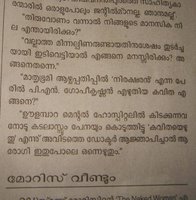

(Current Books has published an assortment of "Sahityavaraphalam's". Currently they are showing it as out of stock. Also "Malayalam varikha" is available online.
I should have written "Sahityavarabhalam" rather than "Sahityavaraphalam". One thing Krishnan Nair would never compromise was incorrect grammar and pronunciation )

